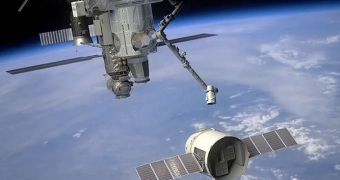About a week from now, Hawthorne, California-based Space Exploration Technologies Corporation (SpaceX) will conduct the first flight test of the Falcon 9/Dragon space system, as stated in a contract it signed with the American space agency.
Under the $1.3 billion contract, the company needs to conduct the first demo flight of the NASA Commercial Orbital Transportation Services (COTS) program in 2010.
The maiden flight of the Falcon 9 medium-lift delivery system took place this June, when lift and ascent technologies were verified and validated. The new mission will be the first to carry the Dragon unmanned space capsule to space.
According to officials at the company, the purpose of the new launch will be to see if the spacecraft can lunch and separate from the rocket, orbit Earth at least 4 times, transmit telemetry, and receive commands from ground controllers.
Additionally, Dragon also needs to demonstrate orbital maneuvering and thermal control capabilities, and must survive atmospheric reentry. Under the COTS terms, the capsule needs to be in good shape upon recovery from the sea.
The first demonstration launch is currently scheduled to take place on Tuesday, December 7, from Launch Complex 40 at the Cape Canaveral Air Force Station (CCAFS), in Florida.
In spite of its successes thus far, SpaceX has been running behind schedule constantly, by at least a few months. The date set for the new take off attempt has been decided upon after many delays as well.
CCAFS officials say that the launch window the company is aiming for remains opened between 9:03 am and 12:22 pm EST (1403 and 1722 GMT). Additional opportunities can be used on December 8 and 9, at around the same time.
If the COTS demo flight is successful, then SpaceX will be able to prove the viability of the Dragon concept, and to validate its entire approach to reaching the International Space Station (ISS).
As the NASA shuttles retire (this is planned for 2011), companies such as SpaceX and Orbital Sciences Corporation will need to come up with valid space designs (capsules and launch rockets) to continue supplying the six-astronaut crew in orbit with everything they need.
The very goal of the COTS program is to encourage progress in this direction within the private space industry. Things are looking positive, given that numerous private corporation are already engaged in the race.
Though some, such as Virgin Galactic, are not cooperating with NASA directly, they are still coming up with valid ideas for reaching low-Earth orbit (LEO), from which other space vehicles could be derived, Universe Today reports.

 14 DAY TRIAL //
14 DAY TRIAL //